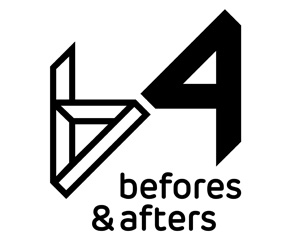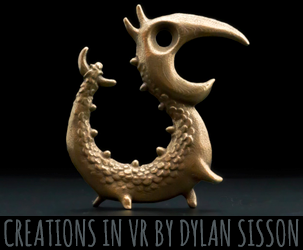


Love, Death + Robots: A Visceral Pleasure
by Maria Elena Gutierrez
by Maria Elena Gutierrez
In his 1920 essay Beyond the Pleasure Principle, Sigmund Freud expounds on the human urge for destruction, which he refers to as Todestrieb or ‘death drive.’ The death drive dominates almost every story in season 3 of Love, Death + Robots, Netflix’s anthology of animated shorts, which uses every trick in the book to explore our overriding fear of death, whether by the use of disturbing grotesquery, quirky humor, visceral action, or by provoking a pure adrenaline rush.
The most disturbing story of all – in the best possible way – is Alberto Mielgo’s stunning Jibaro, a mesmerizing original ballet about a violent seduction of a deaf conquistador by a gold-bedecked siren. A deeply impressionistic work of art, this film cements Mielgo’s reputation as a master of shifting viewpoints. No sooner has he established the conquistador as the hero than he deftly turns the tables and demands that we feel sympathy for the Golden Woman, the mysterious siren who has just massacred all his comrades.
This ambiguity is not the only way in which Mielgo breaks the mold. Sound and vision merge to create a hallucinatory collision of the senses, yet the result is far from chaotic. The meticulous visual details, combined with a sound design that seamlessly blends audio effects with a dissonant musical score, create a powerful and ever-shifting tapestry of noise and light. Meanwhile, both creatively and technically, the rendering of the Golden Woman herself, with her jangling adornments and sinuous movements, is nothing short of breathtaking.
While Jibaro is undoubtedly violent, there is nothing gratuitous in the bloodletting. The Golden Woman’s destructive urge is a part of her nature – a curse that, when lost, brings her inconsolable grief. Likewise the savagery of the lovemaking, where we see the conquistador and the siren drawing blood with each ferocious kiss, serves to heighten the sensory experience for the viewer. Without question, this film is a subversive masterpiece.
Just as visceral is David Fincher’s Bad Travelling, adapted from the short story by Neal Asher. Through his confident mastery of the cinematic craft – in particular his effortless use of the camera to penetrate three-dimensional space – Fincher dials up the tension, the dread and the claustrophobia on board a sailing ship whose crew are attacked by a ‘thanapod,’ a bug-like sea monster. This is a psychological thriller masquerading as a visceral thrill, in its own way just as subversive as Jibaro, and no less disturbing in its exploration of the dark side of the human soul.
There are more bugs in Swarm, adapted from the Bruce Sterling story and directed by series creator Tim Miller. Human researchers investigating an alien hive inhabited by multiple castes of insects, in a sci-fi tale that allows Miller and his artists at Blur Studio to give full rein to their creativity, conjuring up a truly dazzling outer space realm. Like the thanapod in Bad Travelling, a newly-evolved intelligent alien is able to communicate by puppeteering a human victim. Thus is established another of this season’s themes – the lowly place of humans in the vastness of the universe. Nowhere is this idea more starkly presented than in Jerome Chen’s In Vaulted Halls Entombed, from the story by Alan Baxter, in which soldiers encounter a colossal Lovecraftian god in a hidden underground tomb. This particular short film is filled with dread from beginning to end.
All of the above use 3D animation techniques to present vividly-rendered worlds of the imagination. Emily Dean’s The Very Pulse of the Machine, adapted from Michael Swanwick’s story, relies on a more traditional 2D look to tell its tale of a marooned astronaut sinking ever-deeper into a hallucinatory trance as she treks across the surface of Io. With its trippy images of giant rock formations metamorphosing into female statuary, the film channels the French comic Metal Hurlant and the vibrant art of Moebius. Also relying on 2D techniques is Kill Team Kill, directed by Jennifer Yuh Nelson from the story by Justin Coates. Soaked in machismo, its story of a Green Beret team battling a rampant cyber-grizzly is an ironic commentary on the love of guns that leads inevitably to annihilation for all.
The theme of mutually assured destruction is picked up in this season’s three comedic offerings – a trio of little gems that place entertainment right at the top of the agenda. In Patrick Osborne’s Three Robots: Exit Strategies, from the story by John Scalzi, three robots exploring an abandoned Earth ravaged by conflict are forced to conclude that none of the strategies adopted by the various sectors of human society proved successful. A final twist delivers the ultimate irony to this particular cautionary tale about the struggle between humans and machines.
In Mason’s Rats, directed by Carlos Stevens, adapted from Neal Asher’s story, a Scottish farmer wages war against a posse of super-intelligent rats, only to develop a grudging respect for the feisty rodents. Like Jibaro, the film delights in subverting ideas of good and evil, hero and villain, while all the time playing the gory action strictly for laughs.
Last but not least is Night of the Mini Dead, directed by Robert Bisi and Andy Lyon from a story by Jeff Fowler and Tim Miller. Bold, innovative and witty, this shortest of short films tracks the progress of a zombie apocalypse across the planet through a series of tilt-shift vignettes in which humans and zombies alike are rendered as microscopic characters viewed in ultra-wide-angle. Here again we find the motif of humanity’s insignificance within the immensity of the universe – an idea humorously underlined in the film’s delightfully anti-climactic finale.
Dreadful or funny, gorgeous or grotesque, each of the nine films in this latest season of Love, Death + Robots echoes all the louder when viewed in the context of current world events. Whether war in Ukraine or the ongoing gun debate in the United States, the harsh realities of our life on Earth appear all the more vivid for the stark illumination thrown over them by the spotlight of art.
Like all the best science fiction, Love, Death + Robots does more than merely transport us to other worlds. It shines new light on our own everyday lives – and especially the omnipresent reality of death. In doing so it enriches our minds and our souls, and so ultimately reminds us what it is to be human.
Dr. Maria Elena Gutierrez is the CEO and executive director of VIEW Conference, Italy’s premier annual digital media conference. She holds a Ph.D. from Stanford University and a B.A. from the University of California Santa Cruz. VIEW Conference is committed to bringing a diversity of voices to the forefront in animation, visual effects, and games. For more information about VIEW Conference 2022 program of events, visit our website: https://www.viewconfe



























